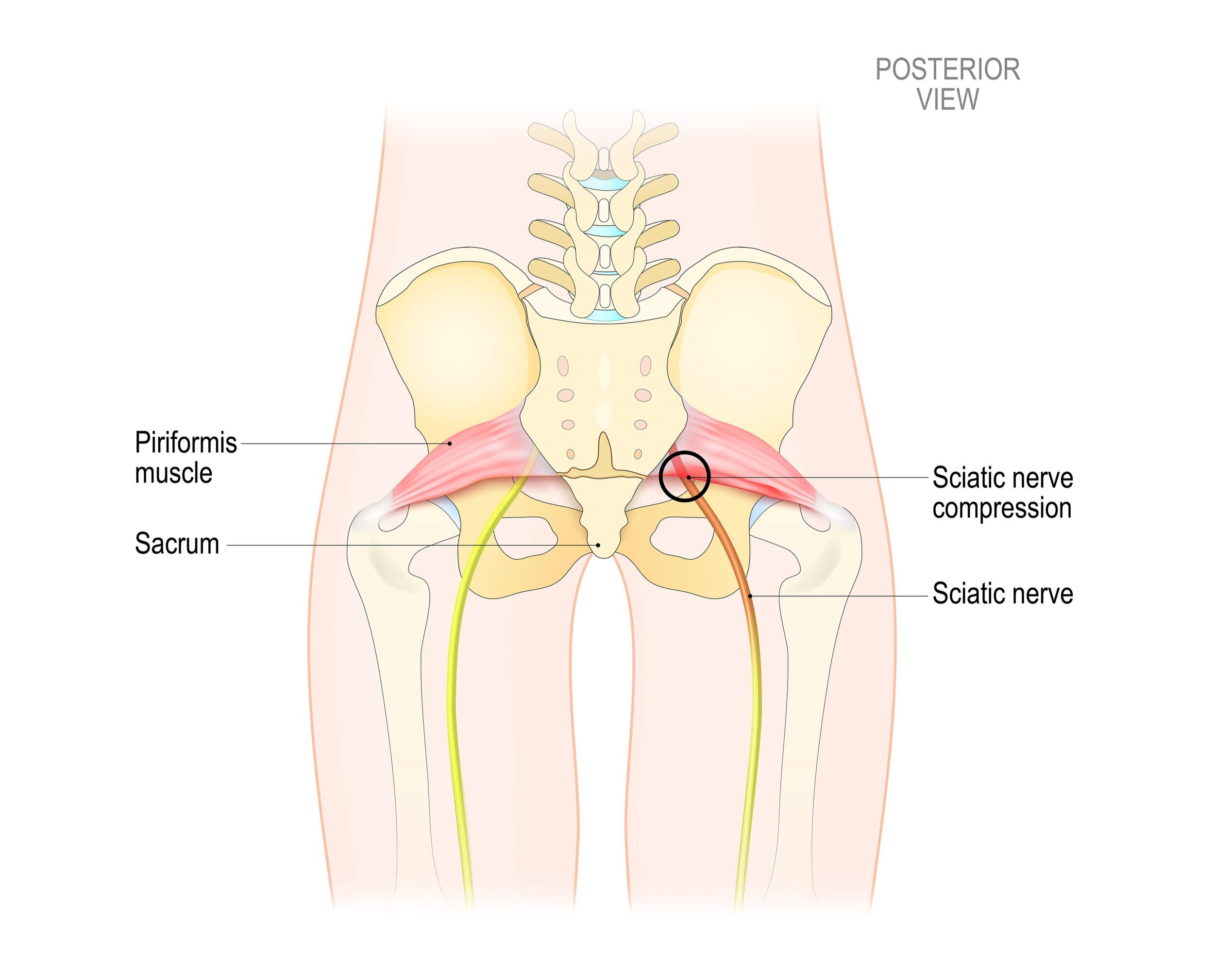We’ve all heard of sciatica - that awful, weird pain that runs down the back of your leg. It’s often fairly vague pain and hard to pinpoint but there’s no mistaking its presence.
Lately, we have seen a serious uptick in clients complaining of sciatica and its good friend, low back pain. So, what is sciatica and what exactly can we do about it?
What Is Sciatica?
Sciatica refers to in irritation of the sciatic nerve which runs down the back side of your leg and innervates the hamstrings and all the muscles below the knee. The sciatic nerve is HUGE - about the width of your thumb! It passes through, around and beside some major structures including the spine as well as the glutes and piriformis in the buttocks.
The classic profile of someone with sciatic-related pain can include:
Pain in the low back that radiates down the back of the leg, described as anything from dull and achy to sharp, burning or electrical
Tingling and/or numbness in the lower spine, buttock, back of thigh, calf and/or foot
Increase in pain with certain postures - often sitting with the legs stretched out or driving a car is terrible, but standing, walking or lying down eases pain
Electrical and/or shock-like pain down the back of the leg
In extreme cases, weakness of the muscles in the lower leg and hamstrings
Usually, the pain is just on one side as it’s only one nerve that’s affected, not both at the same time.
How Do We Treat It?
At the root of it, sciatica is a symptom, not a diagnosis. When the sciatic nerve is pressed on or irritated by other structures, sciatic pain is the result.
Before addressing the sciatica itself, we need to figure out what’s causing the pressure on the sciatic nerve in the first place. The likely candidates include:
Herniated Disc - the nerve roots that exit the spinal cord to form the sciatic nerve can be compressed by a herniated disc, leading to sciatic pain. This is the most common cause of sciatica.
Spinal Stenosis - literally meaning “narrowing”, stenosis occurs when the tunnel of bone that allows the nerve roots to escape shrink, often by bone spurs or a loss of disc height.
Arthritis - When arthritis hits the spine, it usually leads to bone spurs around the exiting nerve roots, similar to stenosis.
Pelvic and/or SI Joint Hypermobilities - most of the muscles that lie over and around the sciatic nerve are attached to some point of the pelvis. When the pelvis is moving more than it should, these muscles often tighten down to try and stabilize the pelvis. When this occurs, an unintended consequence is pressure on the sciatic nerve. Pregnant women with sciatica: this is likely you!
Piriformis tightness - this deep muscle lies right over the sciatic nerve. If it’s too tight, it can squeeze the sciatic nerve.
The treatment approach is defined by the source of the sciatic nerve irritation. Is the problem at the spine? Is it a muscle imbalance or spasm causing the problem?
We see a lot of “one size fits all” fixes for sciatica online. These often don’t work because the root problem isn’t identified and addressed. If your sciatic pain isn’t going away, your best bet is to be assessed by your medical practitioner and figure out what’s driving your sciatica.
My Sciatica Is Gone! How Can I Prevent It From Coming Back?
There are loads of ways to keep sciatica at bay! The top tips:
Stay active - Look at all those causes of sciatica listed above. All of them benefit from exercise - strengthening, stretching, MOVING. In fact, one of the biggest risk factors for sciatica is prolonged sitting. So if you don’t want sciatica, move more!
Maintain a healthy weight - a normal weight keeps your spine healthier with less disc pressure and a lower chance of degenerative changes, both of which contribute to sciatic pain.
Sit properly - I’m talking feet on the floor, bum at the back of your chair with a lumbar support properly. Not sure what that looks like? Check out our blog on proper ergonomics.
Strengthen your core - A strong core means a supported spine and pelvis, preventing sciatic nerve compression.
Use good body mechanics - Considering a disc injury is the leading cause of sciatica, protect those discs! Lift with your legs and try to not twist as you lift a heavy load. Hold those heavy loads close to your body and find a friend if it’s really heavy.
If you’re dealing with low back or sciatic pain, give us a call at (778) 630-8800 or book online.





